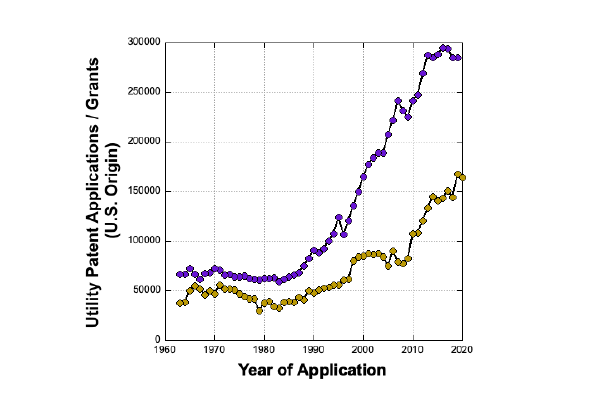Disclosure Heat Map and Startup Handbook: the history and future of UW innovation
Dear friends of CoMotion,
There has been a lot of talk of late about how some companies are embracing remote work while others are gobbling up real estate, doubling down on an in-person post-pandemic future. Most academic researchers do not have a choice. Aside from responsibilities such as planning, coding, data analysis, and writing, which can all be done remotely, continued progress means gathering in physical labs where knowledge is shared and experiments can be performed safely and effectively. Progress also means access to cutting-edge instrumentation and an inclusive environment where learning and ideation are pervasive. Most importantly, true disruption requires that ideas be shared, challenged, refined, and amplified through collisions and synergies across skillsets, disciplines, and schools of thought. While the accelerated adoption of virtual tools facilitates some of these processes, the digital world cannot (yet?) emulate the creative magic that chance interactions spark every day in the real world. As a report on Spatial Alchemy in The Economist puts it, “Physical closeness is part of a formula that enables creativity and co-creation through the clustering of talent and ideas.”
At UW, we are fortunate to be part of an incredible innovation ecosystem where interconnectivity begets impact. Since the passage of the Bayh-Dole Act in 1980, which enabled universities to own, patent, and commercialize inventions developed under federally funded research programs, the UW community has produced over 8,200 innovation disclosures across 188 academic and administrative departments. These disclosures are the first step our researchers and students take in bringing thousands of innovations to the market that save and improve lives. While architecture and proximity have long been recognized as essential drivers of creativity and scientific impact, we wanted to ask a slightly different question. Does innovation diffuse? In other words, will an “innovation cluster” drive innovation in neighboring locations?
Enters CoMotion’s new heat map of disclosures, which chronicles the history of UW innovation by providing a geographical visualization of Records of Innovation (ROIs) submitted to our office from 1980 to the present and dissects these numbers by campuses, departments, schools, and technological sectors. The timeline movie is instructive. The earliest ROIs originate from engineering and the medical and life sciences. These industry sectors have traditionally relied on IP protection, and researchers were likely quick to perceive the benefits of the Bayh-Dole Act for creating impact. A notable example – the Benjamin Hall patents that protected polypeptide expression in yeast and returned over $300 million of licensing revenue to the university – were filed in 1981.
Over the next decade, ROI activity continues to expand in departments primarily affiliated with the School of Medicine and the College of Engineering. However, starting in the early 1990’s, ROIs began blooming in many other locations of the Seattle campus, ushering in the future – our present – where UW innovation happens everywhere.

What triggers this step change is unclear, but it correlates with the 1990s economic boom and a national trend of increased patent filing and granting fueled by major technological advances.

The pattern exhibited by the UW Tacoma and Bothell campuses, both established in 1990 and consistently producing ROI disclosures starting in 2010-2015, is also of interest. It suggests that it takes about 20 to 25 years for a newly established campus to find its footing in the world of translational innovation.
Take a moment to explore the innovation maps of our three campuses where each ROI circle represents the potential for impact – an impact that goes well beyond deep tech. From the School of Social Work’s Forefront Suicide Prevention trainings to the Institute for Learning and Brain Sciences’ SparkLing™ program and the Center for Educational Leadership’s MILE assessment tool, our innovators’ success stories continue to make a difference.
Whether you are contemplating submitting your first or tenth ROI, we know that the road to impact through licensing or startup formation can be daunting. To demystify the process and help you plan for the journey, CoMotion is proud to announce the release of its new Startup Handbook. This Handbook will help you decide if you and your innovation are ready. It will also guide you through the seven steps innovators must take to successfully launch a spinoff. While written for the UW-affiliated researcher, the steps involved in preparing and launching a startup are applicable to entrepreneurs everywhere, from ensuring a strong IP position to building a team to finding funding; there is something for everyone in the Handbook.
No matter where you are on your innovation journey, even if you haven’t yet begun, consider us part of your network. We look forward to supporting you into the future, providing you with the resources and connections within the UW innovation ecosystem and beyond.
Be well,

François Baneyx
UW Vice Provost for Innovation and Director of CoMotion
